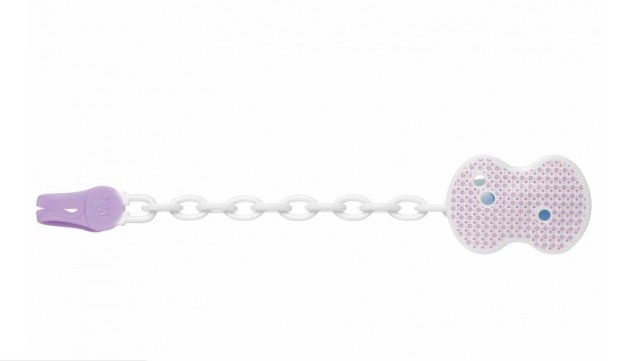When you become a parent, you earn a medical merit badge of sorts. Whether you’re sopping up a goopy nose or extracting a dangling-by-a-thread baby tooth, eventually few things faze you. But sometimes it’s tough to tell what warrants a call to your doctor’s office: Which temperature actually classifies as a “high fever”? What kind of tummy ache means your child has more than your average stomach bug? And when something truly frightening happens — say, your child suddenly breaks out in hives — should you call your pediatrician or head straight to the E.R.?
“Parents should always err on the side of caution and seek immediate medical care when they’re worried about something,” says Anita Chandra-Puri, M.D., a pediatrician at Northwestern Memorial Physicians Group, in Chicago, and a spokesperson for the American Academy of Pediatrics. However, to give you more specific guidelines to follow, we talked to top pediatricians about the 12 symptoms that always require medical attention.
A fever that’s 100.4F or higher in a baby younger than 3 months; higher than 101F in a baby 3 to 6 months; or higher than 103F in a child 6 months to 2 years
Symptom #1: High Fever
Pediatricians stress that when fever strikes, the number on the thermometer isn’t as important as your child’s disposition. The one big exception: infants under 3 months old, who need immediate medical care if fever rises to 100.4F. “If their fever is caused by a bacterial infection like a urinary-tract infection, it could quickly spread through the body,” says pediatrician and Parents advisor Jennifer Shu, M.D., coauthor of Heading Home With Your Newborn: From Birth to Reality. “It’s usually just a common virus causing the symptoms, but we have to check it out to be sure.” It’s important to call your doctor right away; if it’s after office hours, be on the safe side and head straight to the E.R. In kids older than 2, fevers aren’t urgent as long as your child appears to be well hydrated and acting normal. Call your pediatrician for guidance.
Symptom #2: Long-Lasting Fever
If you’ve given your child a fever reducer like acetaminophen or ibuprofen and the number on the thermometer doesn’t budge within four to six hours, call your pediatrician. This is a sign that the infection may be too strong for the body to fight off, and your doctor may want to do a thorough examination to determine the cause. A fever caused by a common virus like cold or flu typically goes away within five days. One that hangs on longer — even when it’s low-grade (100.4?F) — may be caused by an infection like bacterial pneumonia, which requires antibiotic treatment, explains Alanna Levine, M.D., a pediatrician at Orangetown Pediatrics, in Tappan, New York.
Symptom #3: Fever With Headache
A fever that’s accompanied by a stiff neck or headache or a rash that’s either bruise-like or looks like tiny red dots
Call your doctor — these can be signs of meningitis and need immediate attention.
Symptom #4: Circle-Shaped Rash
A rash that resembles a bull’s-eye or consists of tiny red dots that don’t disappear when you press the skin, or excessive bruising
A ring-shaped rash with a pale spot in the center can signify Lyme disease. Get help right away if you see pinpoint-size spots under the skin, which can signal many serious conditions. Any
inexplicable, widespread bruising may be a sign of a possible blood disorder. In addition, a splotchy rash, often a little raised, may be a sign of an allergic reaction. If your child also has difficulty breathing or is agitated or lethargic, she should be checked immediately by a doctor.
Symptom #5: Unusual Mole
Keep tabs on your child’s moles, especially any that she’s had since birth, because those have a higher risk of becoming malignant, says Parents advisor Ari Brown, M.D., a pediatrician in Austin and author of Baby 411. Do a monthly skin check during bathtime. Alert your doctor if you notice a mole that’s irregularly shaped, has ragged borders, is not all one color, or is raised. All of these are signs of a potential skin cancer.
Symptom #6: Sudden Stomach Pain
If your child has pain on the lower right side, ask him to jump up and down — if it’s excruciating for him to do so, it can be a sign of appendicitis. Although the appendix is on the lower right side of the abdomen, the pain caused by appendicitis can start around the belly button and migrate to the right. “With a normal stomach virus, there’s typically fever, then vomiting, then stomachache and diarrhea,” says Dr. Brown. “With appendicitis, it’s sometimes diarrhea, then abdominal pain, then vomiting, then pain, then fever.” If you notice these symptoms, call your doctor — appendicitis progresses quickly and it’s most effectively treated when caught early.
If your child is under age 4 and has stomach pain that causes him to double over one minute and be fine the next, it could be a sign of intussusception, a serious disorder usually affecting young kids where one part of the intestine slides into the other. The pain shows up in 20- to 60-minute increments and can be accompanied by vomiting, fever, blood in the stool, or bowel movements that have a telltale “currant jelly” appearance. “Call your doctor if your child only has severe pain,” says Dr. Levine. “If there’s crampiness plus signs in the stool, head straight to the hospital.”
Symptom #7: Headache With Vomiting
A headache that occurs in the early morning or wakes her up in the middle of the night, or that’s accompanied by vomiting
These could be signs of a migraine. Your doctor can determine the appropriate treatment. Migraines in kids are not dangerous, and tend to run in families. However, morning and middle-of-the-night headaches can also be a signal of something more serious, and that’s why you want to see a doctor right away.
Symptom #8: Decreased Urination
Dry mouth and lips, decreased urination, a flat fontanelle (in an infant), dry skin or skin that stays bunched when you pinch it, or excessive vomiting or diarrhea
These signs are all associated with dehydration and need to be treated fast because dehydration can lead to shock. Call 911 or get to the hospital if you think your child is nearing this stage. Otherwise, call your doc and try to get more fluid into your child.
Symptom #9: Blue Lips
Blueness or discoloration around the mouth; labored breathing where you can see your child sucking in his chest and abdomen; or panting, grunting, or a whistling sound when breathing
“Breathing problems are more worrisome when the sounds come from the chest and lungs, not the nose,” says Dr. Shu. Critical breathing issues are often due to choking, an allergic reaction, an asthma attack (which can occur in kids as young as a few months old), pneumonia, whooping cough, or croup. Seek help right away or call 911. If it’s not obvious that your child is having serious trouble, check his respiratory rate. Count each breath taken in for 30 seconds and then multiply by two. A normal rate is less than 60 for newborns; less than 40 for babies under 1 year; less than 30 for 1- to 3-year-olds; and less than 24 for 4- to 10-year-olds.
Symptom #10: Swollen Face
Swollen tongue, lips, or eyes, especially when accompanied by vomiting or itchiness
These often signal a serious allergic reaction (anaphylaxis). Symptoms may include swelling, breathing problems, and severe hives and need immediate attention. Call 911 and, if possible, give your child a shot from an EpiPen or a dose of an antihistamine like Benadryl in the meantime. For less severe reactions, call your doctor and ask about giving an antihistamine to quell symptoms.
Symptom #11: Vomiting After Falling
A fall when your child is less than 6 months old, or has obvious neurological changes like confusion or loss of consciousness, or that causes vomiting and/or any damage to the body, such as broken bones
These emergency situations must be addressed by a doctor — so head to the nearest medical facility. Falls are generally not problematic in kids older than 6 months if they only fall the distance of their height and don’t land on anything hard or sharp.
Symptom #12: Excessive Bleeding
A cut that gapes open widely enough that you could stick a cotton swab in it, or that doesn’t stop bleeding within a few minutes of applied pressure
These are signs that your child needs medical attention (and perhaps stitches, skin glue, a butterfly bandage, or staples). Depending on the severity of the injury, your next step should be to either call 911, go to the E.R., or call your pediatrician. You should also always see your doctor if an animal bites your child or if another child bites your child and breaks the skin.
All content on this Web site, including medical opinion and any other health-related information, is for informational purposes only and should not be considered to be a specific diagnosis or treatment plan for any individual situation. Use of this site and the information contained herein does not create a doctor-patient relationship. Always seek the direct advice of your own doctor in connection with any questions or issues you may have regarding your own health or the health of others.





Add Comment